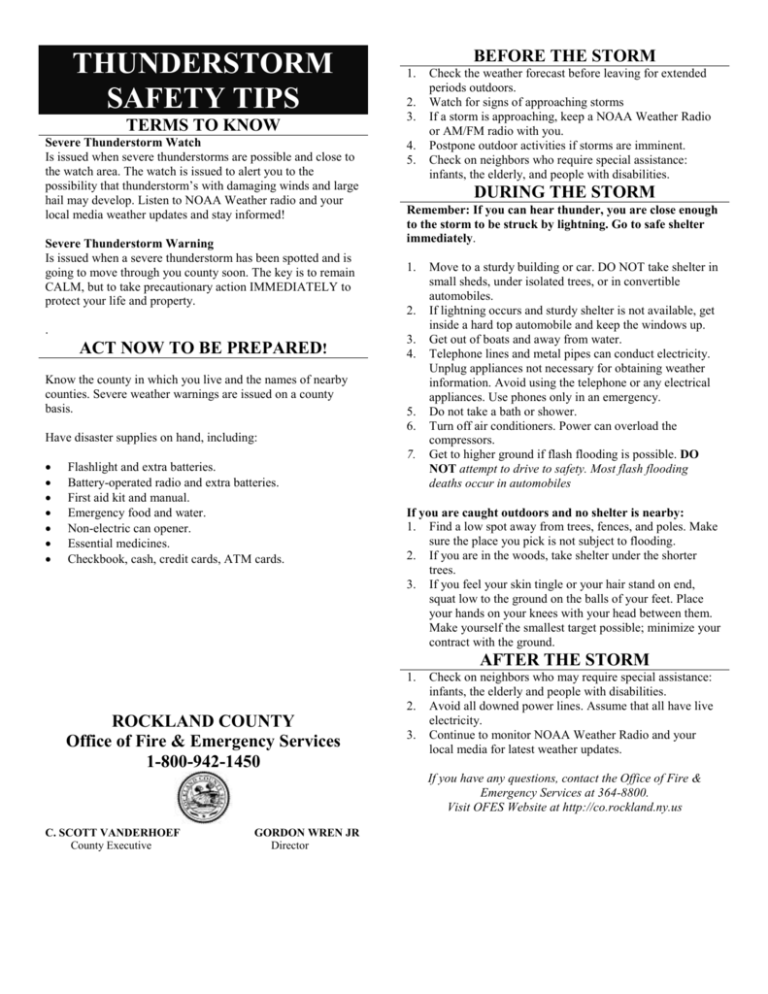Severe thunderstorms can pose a significant risk to life and property. With the advent of advanced meteorological technology, understanding and responding to severe thunderstorm warnings is crucial for safety. This article will delve into what severe thunderstorm warnings are, how they are issued, their implications, and the steps you should take to prepare and respond effectively.
What is a Severe Thunderstorm Warning?
A severe thunderstorm warning is an alert issued by meteorological agencies, typically the National Weather Service (NWS) in the United States, when a severe thunderstorm is occurring or imminent in a specific area. These storms are characterized by:
- Wind gusts of 58 mph (93 km/h) or higher.
- Hail of 1 inch (2.54 cm) in diameter or larger.
- Frequent lightning.
Understanding these criteria is essential, as they help individuals gauge the severity of the storm and the potential risks involved.
How are Severe Thunderstorm Warnings Issued?

Severe thunderstorm warnings are issued based on real-time data collected from various sources, including:
- Weather radar systems that detect storm intensity.
- Ground reports from meteorologists and storm spotters.
- Satellite imagery that tracks storm movement and development.
Once a storm meets the criteria for severity, meteorologists analyze the data and issue warnings through various channels, including:
- Wireless Emergency Alerts (WEA).
- Local television and radio broadcasts.
- Weather apps and websites.
The Importance of Severe Thunderstorm Warnings
Severe thunderstorm warnings serve a vital purpose in public safety. Here are some key reasons why they are essential:
- Risk Awareness: Warnings help the public understand the immediate dangers posed by severe thunderstorms, enabling them to take appropriate action.
- Preparedness: Advanced notice allows individuals to prepare their homes, secure property, and take shelter.
- Response Coordination: Emergency services can mobilize and coordinate resources more effectively in anticipation of severe weather events.
Statistically, timely warnings can significantly reduce injuries and fatalities during severe weather events. For instance, according to the NWS, the implementation of improved warning systems has led to a decrease in storm-related fatalities by more than 50% over the past few decades.
What to Do When a Severe Thunderstorm Warning is Issued

When a severe thunderstorm warning is issued, it is crucial to take immediate action to ensure your safety. Here are some steps to follow:
- Stay Informed: Keep a battery-powered weather radio or a reliable weather app handy to receive updates.
- Seek Shelter: Move indoors, preferably to a basement or an interior room away from windows. Avoid using electrical appliances during the storm.
- Secure Outdoor Items: Bring in or secure any outdoor furniture, decorations, or debris that could become projectiles in strong winds.
- Prepare for Power Outages: Have flashlights, batteries, and a supply of non-perishable food and water ready.
- Follow Emergency Services: Adhere to any additional instructions or evacuations from local authorities.
Case Studies: The Impact of Severe Thunderstorm Warnings
Understanding the real-world implications of severe thunderstorm warnings can be enhanced through case studies. Here are a couple of examples:
The 2011 Joplin Tornado

On May 22, 2011, a devastating tornado struck Joplin, Missouri. The National Weather Service had issued warnings for severe thunderstorms in the area, but the tornado’s rapid development caught many residents off guard. Despite the warnings, the destruction resulted in 158 fatalities and thousands of injuries, highlighting the need for effective communication and preparedness in the face of severe weather.
The 2020 Central Iowa Severe Thunderstorm
In August 2020, a severe thunderstorm swept through Central Iowa, producing wind gusts of up to 140 mph. The NWS had issued timely warnings, allowing residents to take shelter and secure property. As a result, while there was significant damage to infrastructure and agriculture, the number of injuries was relatively low, demonstrating the effectiveness of prompt warnings and the public’s response.
Common Myths About Severe Thunderstorm Warnings

Several myths surrounding severe thunderstorm warnings can lead to confusion and poor decision-making. Here are some common misconceptions debunked:
- Myth: Thunderstorms are harmless. Fact: Severe thunderstorms can produce dangerous conditions, including tornadoes, flash flooding, and hail.
- Myth: Warnings are often false alarms. Fact: While some warnings may not result in significant impacts, the intent is to err on the side of caution to protect lives.
- Myth: I can wait until the storm arrives to prepare. Fact: Preparation should begin as soon as a warning is issued to ensure safety and minimize damage.
Understanding severe thunderstorm warnings is crucial for protecting yourself and your loved ones during adverse weather conditions. By knowing what constitutes a severe thunderstorm, how warnings are issued, and the importance of timely response, you can significantly improve your safety. Remember to stay informed, take immediate action when warnings are issued, and debunk common myths that may hinder effective preparation. As severe weather events become more frequent due to climate change, staying educated will empower you to navigate these challenges more effectively. Prioritize safety, remain vigilant, and ensure that you and your community are prepared for the next storm.


